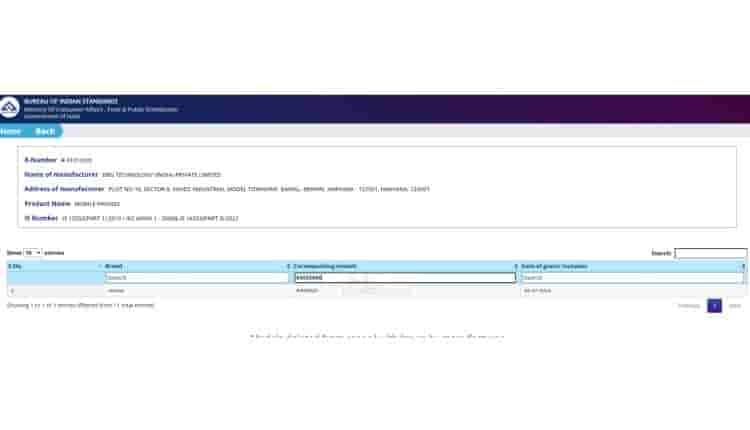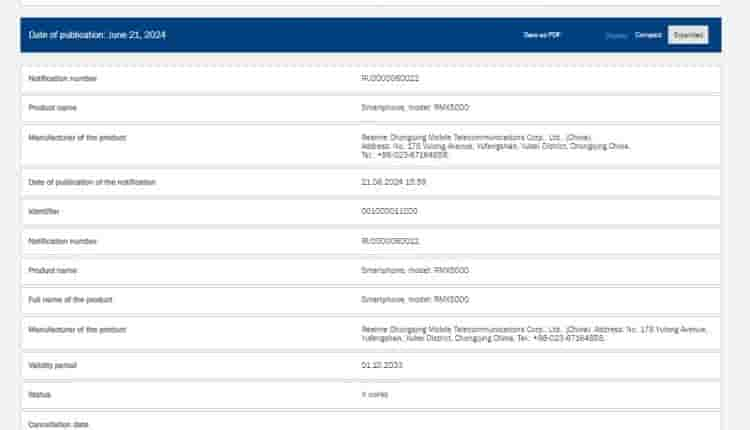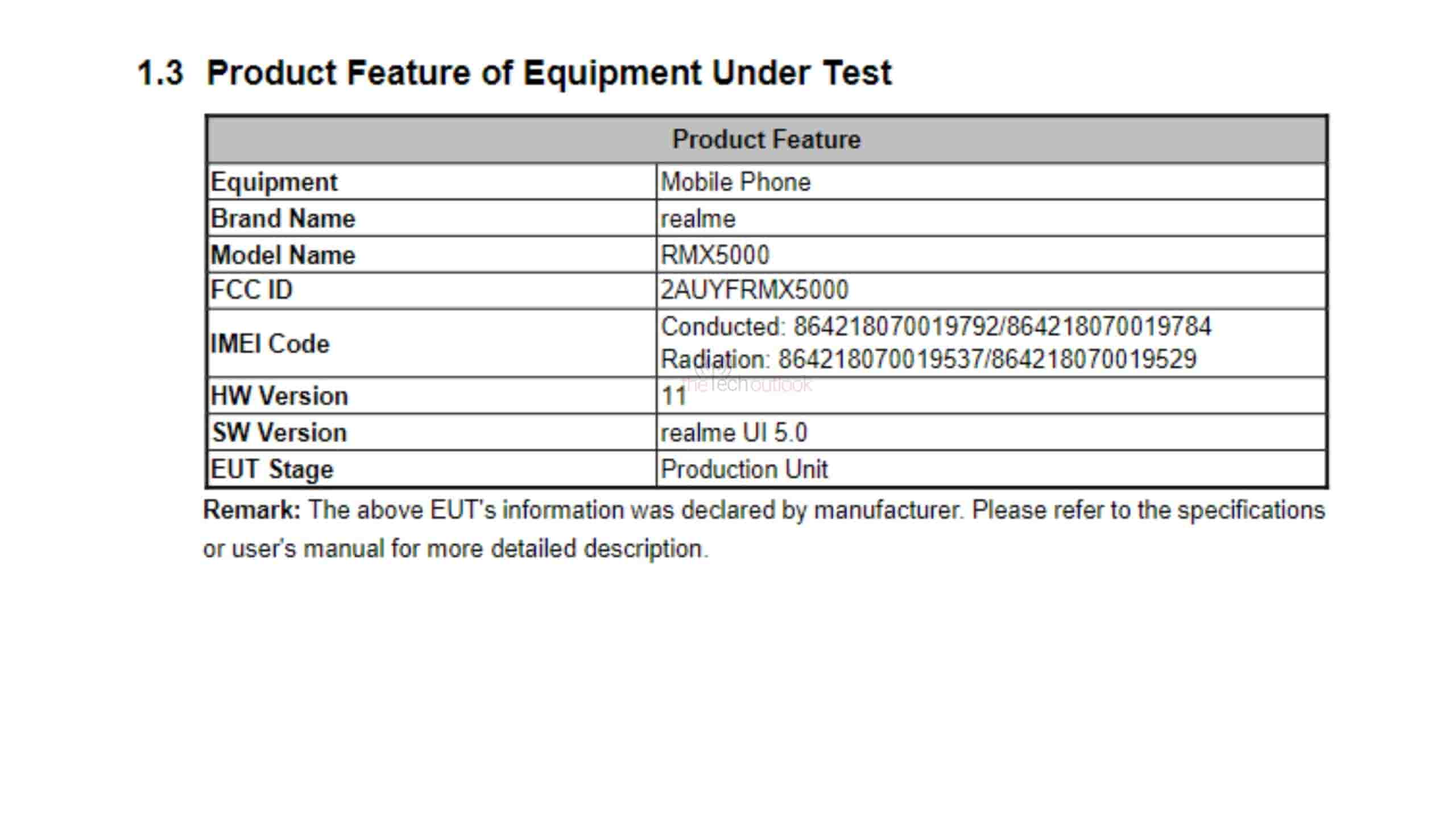Realme 13+ Global Variant Secures Multiple Certifications: BIS, TUV, FCC, EEC, and SDPPI
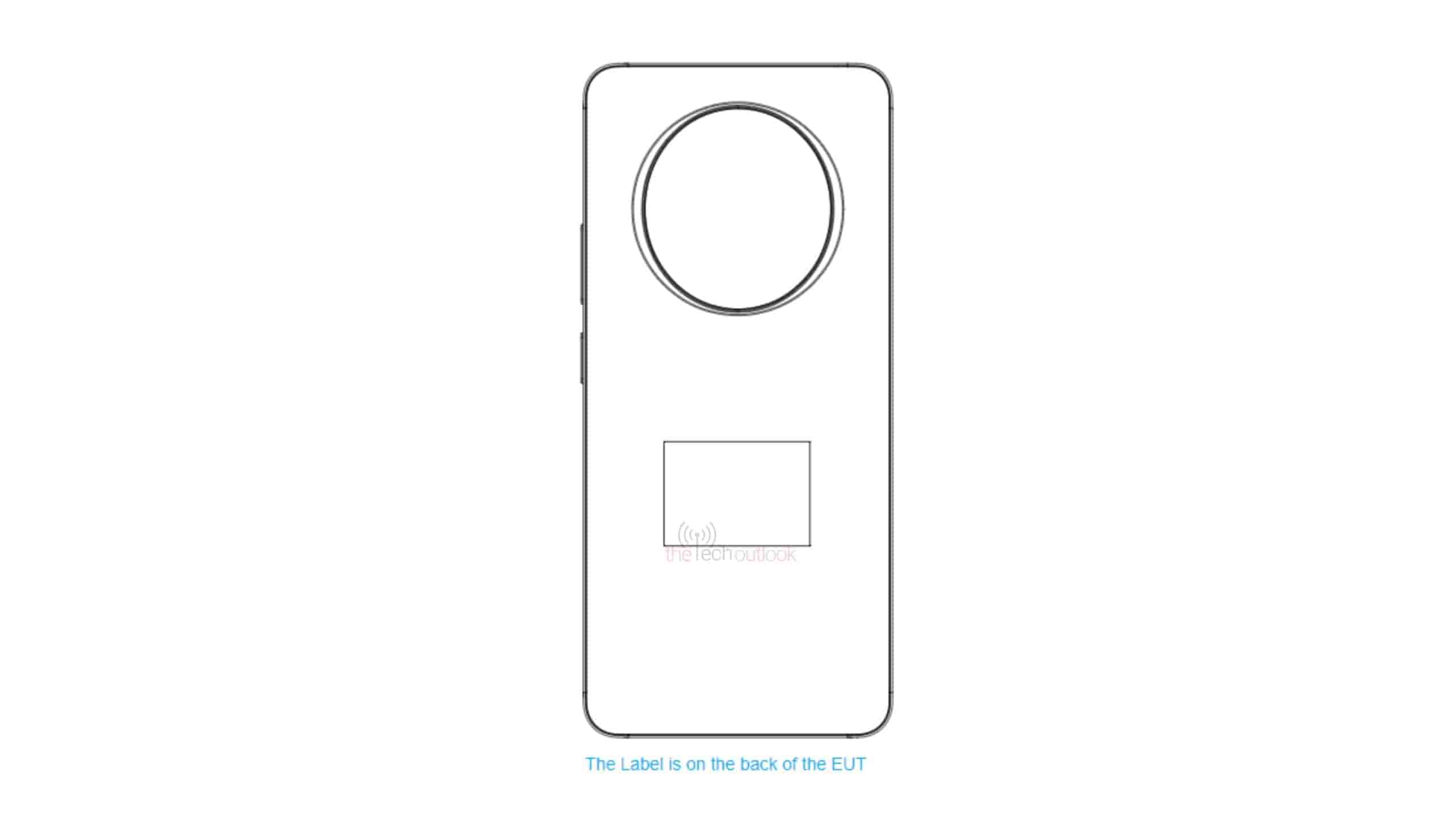
The Realme 13 series is likely the next lineup that Realme is preparing to launch in both global and Chinese markets. Recently, the Realme 13+ was spotted on the TENAA certification website with model number “RMX5002”, revealing some of its key specifications. Now, the global variant has also been on several certifications, including BIS, TUV, FCC, EEC, and SDPPI, which I will discuss in the article below.
Realme 13+ specs revealed
Starting with the Indonesian SDPPI certification, it reveals the model number as “RMX5000” and confirms the moniker “Realme 13+ 5G.” Similarly, the BIS and EEC certifications list the same model number, suggesting that launches in India and Europe are also on the horizon.
Additionally, the TUV certification indicates that the device may come with a battery capacity of 4,880 mAh. It also shows that the device was tested with 10W, 36.5W, and 80W fast chargers.
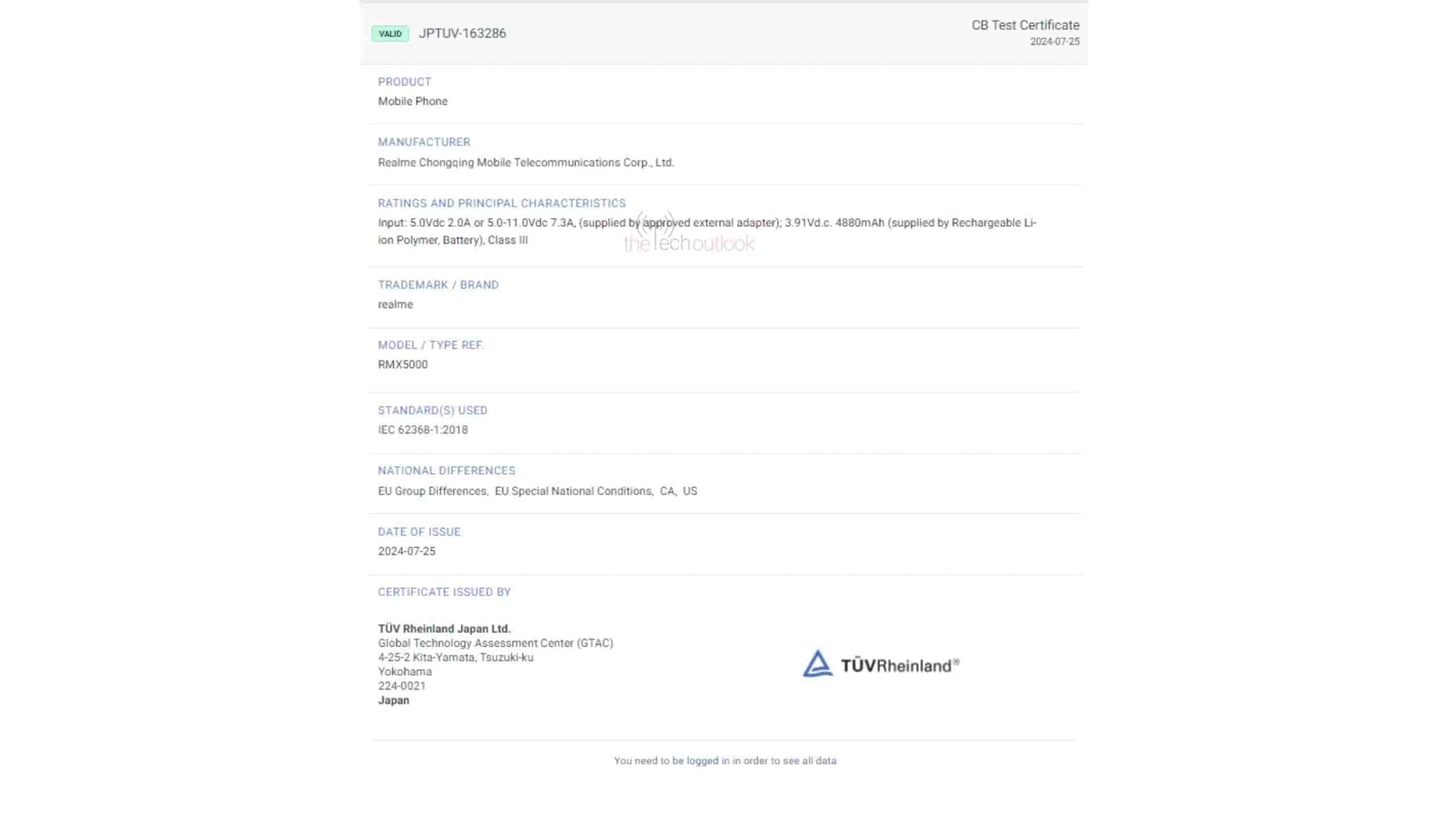
The FCC certification, on the other hand, includes a rear schematic of the smartphone. It reveals a circular camera module, with the volume rocker and power button located on the left side of the device. Additionally, it confirms that the smartphone will come with Realme UI 5.0 based on Android 14 straight out of the box.
The Chinese variant of the Realme 13+ has been revealed to feature a 6.67-inch AMOLED display with a screen resolution of 2400×1080 pixels and support for 16.7 billion colours. The battery capacity is identical to that of the global variant, standing at 4,880 mAh. In terms of cameras, the device will have a dual rear camera setup with a 50MP main sensor and a 2MP secondary sensor, while the front will sport a 16MP selfie shooter. According to TENAA, the Chinese variant will offer multiple RAM options, including 6GB, 8GB, 12GB, and 16GB, as well as internal storage options of 128GB, 256GB, 512GB, and 1TB. Additional features include an under-display fingerprint sensor and facial recognition.
Judging by the design schematic from the FCC, the global variant appears quite similar to the Chinese version. It remains to be seen whether the design and specifications will indeed be identical across regions.


